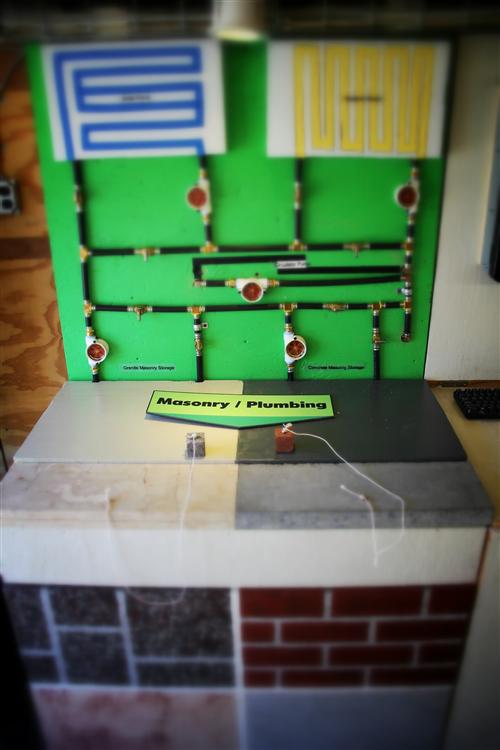-


Introduction:
We can utilize passive solar heating by selecting appropriate building materials. This will reduce energy costs in our homes.
Objectives:
Students will know
- the materials that can be used to reduced energy costs
- methods that can be used to manipulate heat transfer
Background Information:
In the past much of the heating used in our homes or buildings was derived from fossil fuels such as petroleum, natural gas or coal. Our masonry station provides an example of at least one way of capturing solar energy, storing it and utilizing it when needed.
What the student will experience at this station:
The students will manipulate various valves to direct or redirect the flow of glycol (See schematic). This liquid is a non-toxic antifreeze, and can transfer heat as it flows in tubes underneath floor tiles. However there are two possible sources of heat for the glycol. The problem that students have to solve is which source of heat to use, and how to move it to where they want it so that it can warm the floor. To solve this, students will first choose the heat source. This will either be heat directly from the solar panel, or masonry bricks that store heat energy transferred from the solar panel earlier in the day. The dense mass of granite or concrete bricks makes them suitable to use as heat sinks. That is, you can warm them when there is an excess of heat energy, storing it until needed. Next, students will turn the valves appropriately to direct the heat exchange medium (glycol) to where they wish the heat to go. They will be able to follow the movement of the fluid by observing flow indictors installed throughout the system. They will learn that density determines the thermal storage capacity in such materials. Samples of different density materials will be available to allow the students to feel qualitatively the differences between the materials.

